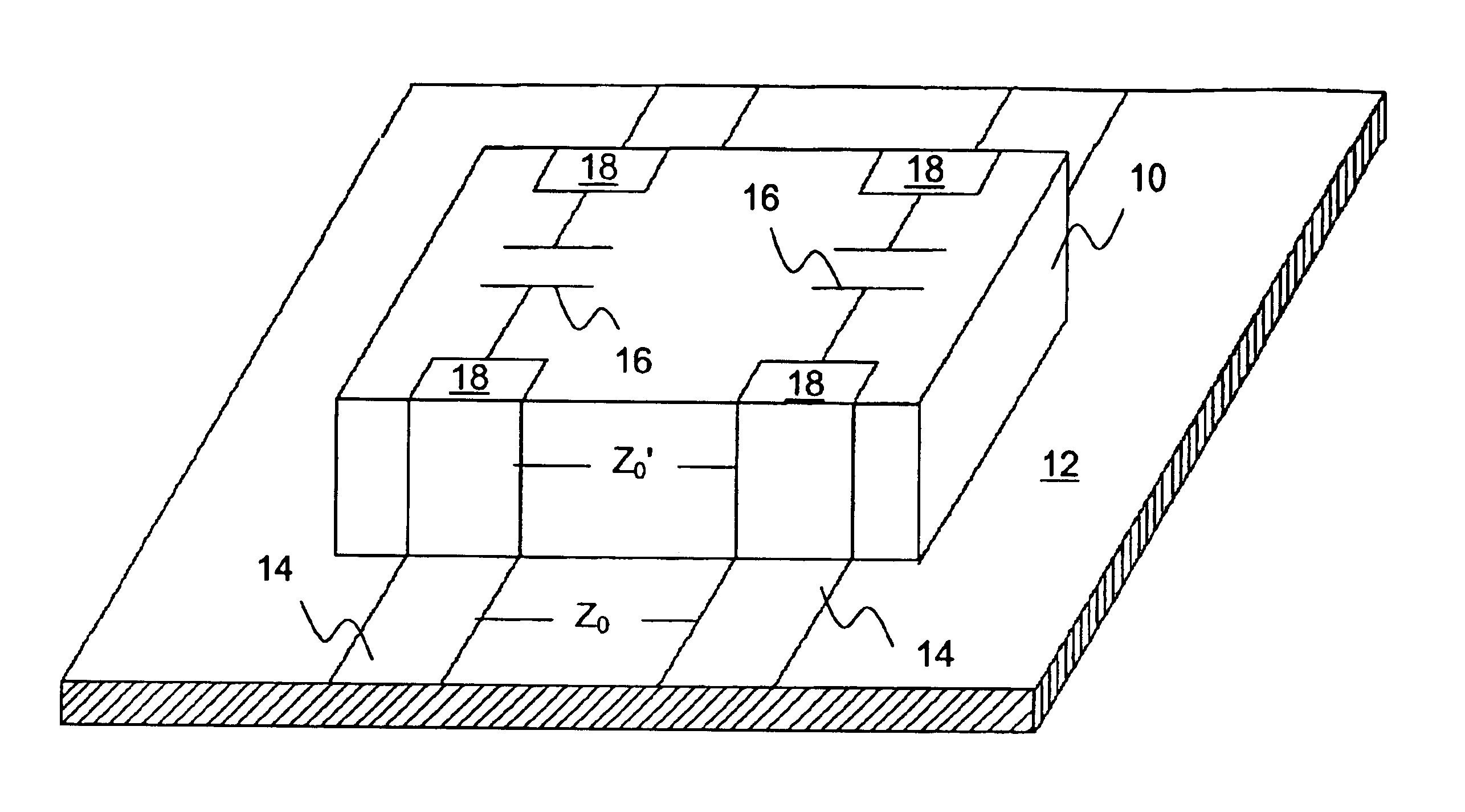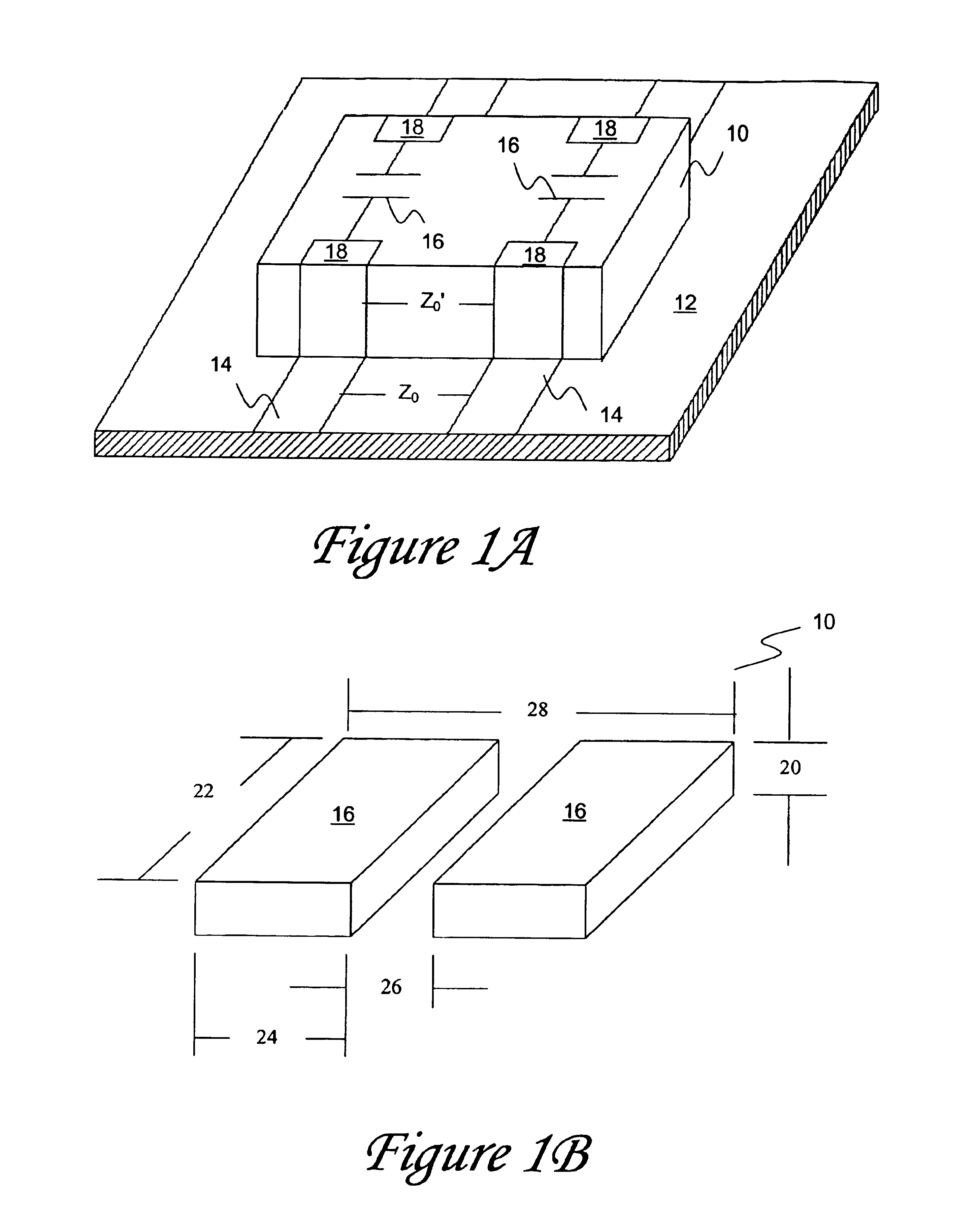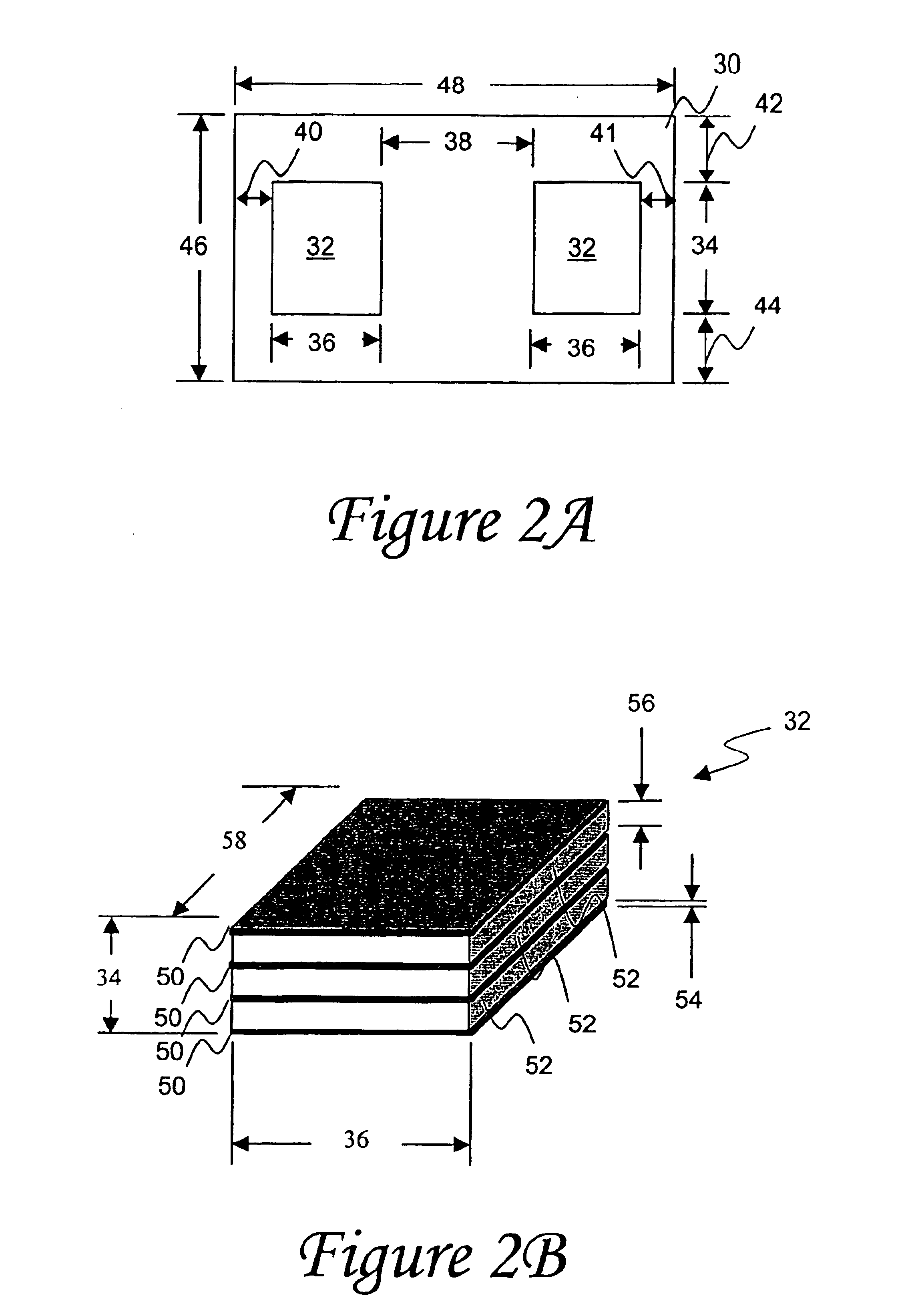Transmission line capacitor
- Summary
- Abstract
- Description
- Claims
- Application Information
AI Technical Summary
Benefits of technology
Problems solved by technology
Method used
Image
Examples
embodiment 30
[0048]Assume that it is desirable to have a characteristic impedance of about 100 Ω and for the dielectric material between capacitors 32 in embodiment 30 of FIG. 2A to be characterized by a dielectric constant of about 8.1. Utilizing the characteristic impedance formulas given in (1), it is thus determined that for the above exemplary performance characteristics it is desired to have a height to spacing ratio (distance 34 / distance 38) of about 0.313. FIG. 3A provides a graphical representation of the relationship between the height to spacing ratio versus dielectric constant for a transmission line capacitor as depicted in FIG. 2A and having a given characteristic impedance of 100 Ω. Some particular examples of this relationship are given in Table 1 below.
[0049]
TABLE 1Exemplary Values for Design of First TransmissionLine Capacitor EmbodimentHeight to Spacing RatioDielectric Constant (εr):(distance 34 / distance 38):1.02.4762.71.3388.10.31315.0 0.130
exemplary embodiment 30
[0050]When designing a transmission line capacitor embodiment such as first exemplary embodiment 30, it should be noted that the height and spacing are particularly important design aspects of such device. Thus, it is important also to account for the fact that the height 34 of each capacitor 32 includes not only the thickness of the dielectric material, but the thickness of each active conductive plate within the capacitor. It was previously mentioned that capacitor 32 may be characterized by a plurality of active plates connected together in parallel to yield respective multilayer capacitors. This is represented by the perspective depiction in FIG. 2B of an exemplary embodiment of a capacitive element 32 in transmission line capacitor 30. Multilayer capacitor 32 is preferably formed with a plurality of active electrode layers 50 separated by layers of dielectric material 52. Three dielectric layers 52 are illustrated in FIG. 2B for exemplary purposes only. It should be appreciated...
embodiment 60
[0059]For exemplary calculation purposes, assume that ∈r1=100.0 and that ∈r2=1.0. If a value of ∈r=10 is desired, then (3) can be solved to determine that distance 70 needs to be 0.273 mm. Similarly, if a value of ∈r=20 is desired, then (3) can be solved to determine that distance 70 needs to be 0.242 mm. FIG. 4B provides a graphical representation of the equivalent dielectric constant (∈r) versus cut-width for embodiment 60 of FIG. 4A assuming that ∈r1=100.0 and that ∈r2=1.0.
[0060]The exemplary numerical analysis presented above with respect to the second transmission line capacitor embodiment 60 is provided merely as an example of how to form a transmission line capacitor embodiment having a channel portion formed therein in accordance with the present technology. It should be noted from the exemplary data that the channel area needs to be cut quite precisely in order to ensure a given equivalent dielectric constant (∈r) between capacitors 62. Thus, it may be preferred to fill the...
PUM
| Property | Measurement | Unit |
|---|---|---|
| Electric impedance | aaaaa | aaaaa |
| Dielectric polarization enthalpy | aaaaa | aaaaa |
| Electric potential / voltage | aaaaa | aaaaa |
Abstract
Description
Claims
Application Information
 Login to View More
Login to View More - R&D
- Intellectual Property
- Life Sciences
- Materials
- Tech Scout
- Unparalleled Data Quality
- Higher Quality Content
- 60% Fewer Hallucinations
Browse by: Latest US Patents, China's latest patents, Technical Efficacy Thesaurus, Application Domain, Technology Topic, Popular Technical Reports.
© 2025 PatSnap. All rights reserved.Legal|Privacy policy|Modern Slavery Act Transparency Statement|Sitemap|About US| Contact US: help@patsnap.com



